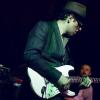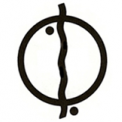Leaderboard
Popular Content
Showing content with the highest reputation on 11/25/2014 in all areas
-
Thanks for the great suggestions, Andy. :lol: I'll be taking these puppies for a couple of spins next few weeks.3 points
-
Here my first actual piece i shot with the filter. I have to admit that I am quite pleased!1 point
-
Lenses with character
Cosimo murgolo reacted to andy lee for a topic
comurit its a very nice lens the Oly 100mm ! great for head shots - and background separation you should have a very narrow dof with the anamorphic on the front too - try some close up Sergio Leone style face shots with it1 point -

GH4 ISO capabilities and quirks
johnnymossville reacted to JazzBox for a topic
totally agree! In my humble experience with GH4 it's better using an higher ISO then underexposing. Grain is really "organic", not harsh! I like it!1 point -

Funny Cinematographer parody video
Nikkor gave a reaction for a topic
The original is definitely not a parody, but I can't decide which one is funniest.1 point -
Because I thought (based on my initial tests) that I can recover more details with Shadow/Highlight than with Contrast... But because You asked, I made more detailed tests and I realized I was wrong. I tested shadows and highlight recovering in high dynamic scene with: 1. Contrast:0 + Highlight/Shadow:0 2. C:-5 + H/S:0 3. C:0 + H/S:-2/+2 4. C:0 + H/S:-5/+5 Here are my observations: - Clipping is exacly the same in all tests. No additional data captured in all tests. - Test 2 and 3 give similar results (Test 2 has little bit less contrast): C:-5 is almost the same effect as H/S:-2/+2 - Recovered deep shadows are: 1. worst (noise blockiness, blue channel clipping), 2. = 3. better, 4. best - Noise level in mid-tones is similar in all tests when final contrast is matched. Scary noise :) in flat images disappears when contrast is reversed (Or appears when lowering contrast in post). Conclusions: - Lowering contrast or H/S curve does not affect overall camera dynamic range. - Looks like Contrast and H/S are altered after camera captured the image but before encoding (that's why we can get better shadows after lowering contrast). - You can get nicer deep shadows (mostly when you want to brighten them) by lowering contrast (no matter if by Contrast or H/S curve) only because the shadows move to the right on the histogram. The differences between 'normal' picture profiles (Natural, Standard, Portrait) are small and difficult to measure and I don't have time to do that. By simple comparison they just look like small Contrast/Saturation tweaks, nothing more. So in normal situation, especially when you have enough dynamic range to move the histogram to the right, there is no reason to lower contrast - you only loose some color information. You can lower the contrast in post with same effect (Just try - you can push it really hard in post). Lowering contrast can improve only shadow noise. It is usefull when most of the histogram is on the left (or important things are in shadows) or if you want to brighten the shadows in post. The darker the shadows, the more usefull is moving them to the right on the histogram. My default settings will be for now: Picture profile: Standard Contrast: 0 (or -5 just in case to have more control over shadows in post) Sharpness: -5 Noise reduction: -5 Saturation: 0? Shadow/Highlight: 0/0 When need to brighten deep shadows in post: Contrast up to -5 and then additionally S/H up to +5/-51 point
-
FM lens discount
Kristoferman reacted to Liszon for a topic
Um, what's with the Austrians? I think the maker of this lens is a Lithuanian bloke, based in London. Or that's just a name for that theory isn't it?1 point -
The Next Big Indie Filmmaking Idea on Kickstarter: Lume Cube
Amro Othman reacted to jax_rox for a topic
You mean like DMX...? I'd like to know what their light output is/some photometrics. I don't mind the idea of 'modular' lighting, but I can't see myself using these. Potentially not enough output, too small (so inherently hard) - I could see myself ganging a few together and putting diffusion over them, but then it defeats the purpose. There'll be some obscure cases, but I don't think it's the second coming of lighting equipment.1 point -
I would get a set of Canon FD primes 20 24 28 35 50 85 100 and an RJ speedbooster for Canon FD - micro 4/3 you can shoot a whole movie on them and they are superb lenses , great warm colour tinge superb blacks and very sharp1 point
-
Lenses with character
Palpet reacted to Bioskop.Inc for a topic
I've avoided this topic for a while & so am now going to throw a curve ball into the mix - "Meyer-Optik Gorlitz" lenses (M42). I haven't tried all of them & there is a lot of info out there - some are to be avoided, but the majority are really good. They are often compared to Zeiss, but I think they have lots more character than Zeiss lenses: Orestegon 29mm f2.8 - probably the best, regarded by most as better than a Zeiss lens. Lydith 30mm f3.5 - lots of character Orestor 100mm f2.8 - this is my favourite of all lenses (there's an older version called Trioplan from 1938 - more character) Orestor 135mm f2.8 - the famous Bokeh Monster Obviously, the Russain lenses are a must if you want Vintage lenses with a lot of character: Mir 24M/N 35mm f2 - It is MC but not modern coating, so not to be put off by it, an excellent lens (M=M42 mount, N=Nikon mount) Mir 1b 37mm f2.8 - Not as good as the 24, but flares are amazing. Helios 44-2 58mm f2 - the 44-2 has a preset aperture & the zebra version is the best i've tried. Jupiter 9 85mm f2 - dreamy wide open Helios 40-2 85mm f1.5 - dreamy wide open & really swirly bohkeh, much better than the Jupiter. Jupiter 37a 135mm f3.5 - get the non-MC version, sharpish & very low contrast Jupiter 11a 135mm f4 - not a fast lens but does produce really pleasing images (there's an older 11 version). Tair 11a 135mm f2.8 - Just amazing & has 20 blades. Simply a must, especially on Full frame with an Iscorama.1 point -
If by "pretty sure" you mean that you just made something up, than yes you're pretty sure indeed. BMD Film color space does not bake in a teal orange grade, that's silly.1 point
-
Of course - I've shot at T1.3. I personally think that it's less about the focus pulling (I've worked with some awesome focus pullers, though it is not easy to pull focus WFO even with the latest monitoring options) and more about the look in general. As always, the look needs to support the story. If that means shooting WFO, then that's totally justified. Shooting WFO because you think 'that's what Hollywood films looks like' is a different story - of course, I'm not saying you, in particular, do this, just as a general statement. And yes, if I was unhappy with the performance of a certain dolly, I would not use it on my films. Let's be clear - there were fast lenses for a long time. I think the current trend for shallower DOF comes down to being able to shoot on faster stocks/higher ISOs. In the past, you may have had a fast lens, but as a general rule you were shooting with large lights that gave a huge amount of illumination. You can ND and dim as much as you want, but you're still going to end up shooting around a 4. There's nothing inherently wrong with shooting wide open - many films have done it and have done so for many, many years. A lot of the night scenes in Social Network were shot without lights at T1.3 (Master Primes). I think it would be a silly assertion to say that Hollywood films are shot at 5.6 and home movies are shot wide open. Neither of those statements are all that factual. However, I think it's also interesting to assert that shooting wide open, without lights is a way to 'set a new standard' and create images that look better than Hollywood (to paraphrase). Of course, this is not an attack on you at all, or anyone, simply a discussion of the points being made. Everything we're talking about here - anamorphic, shooting wide open, shooting stopped down... all has a different look, and each one is totally viable and entirely acceptable as long as it supports the story. It's when I hear that someone's shooting wide open because 'that's what Hollywood does' or 'that's what Hollywood movies look like' is when I start to take issue. You make big claims - I would posit that most audiences have no f*n clue that full frame looks different. Indeed, the difference in final look is negligible, apart from slightly more Depth of Field for the same field of view. Most audiences don't notice until something is totally out of focus. I would also suggest that Hollywood has had access to larger formats (65mm film, for example). There's a lot of limitations, however, when it comes to a larger sensor or film frame (lack of good cinema lenses being a major one), and at least in the comparison of APS-C to Full Frame, the difference in look is negligible. Well realistically, that's all that should matter - if the client likes it better, who are you/we to tell them they're wrong! I agree with this point. Too often it seems this razor-thin DOF has been employed to hide the DP's shortcomings in not being able to light a whole set, or the shortcomings of the Production Designer not being able to design the set properly, or in general a lack of budget so that they could not afford a Production Designer to design the set, or lights for the DP. It can be a bit of a cop-out. I've shot at T1.3 on S35 and not had as shallow DOF as a lot of the 5D stuff I've seen. You lose so much depth shooting like that, and it can feel unnatural. However, it depends on the story - if I was given a script that I felt needed to be shot that way, I would certainly do it.1 point
-
Rather than bog this thread down with more opinions regarding Sony's color science, since you seem to be possibly experimenting with Resolve, it may make sense for you to explore the new Color Match feature. One of many Resolve Color Match demo videos on the Internet: The smallest and least expensive compatible color targets are these two: http://www.amazon.com/X-Rite-MSCCPP-ColorChecker-Passport/dp/B002NU5UW8 http://store.smpte.org/product_p/dlab-smpte-pos.htm Importantly, I'm not suggesting that you have to shoot a chart for every one of your setups. However, this very useful tool will quickly get you into the ballpark and you will be able to see what it is doing to bring your images into alignment. And once you settle on a particular profile, you can use this tool to create LUTs that can be used in other software platforms. Additional related reading can be found here: http://provideocoalition.com/aadams/story/what-good-is-a-macbeth-colorchecker-chart HTH. Good luck.1 point


